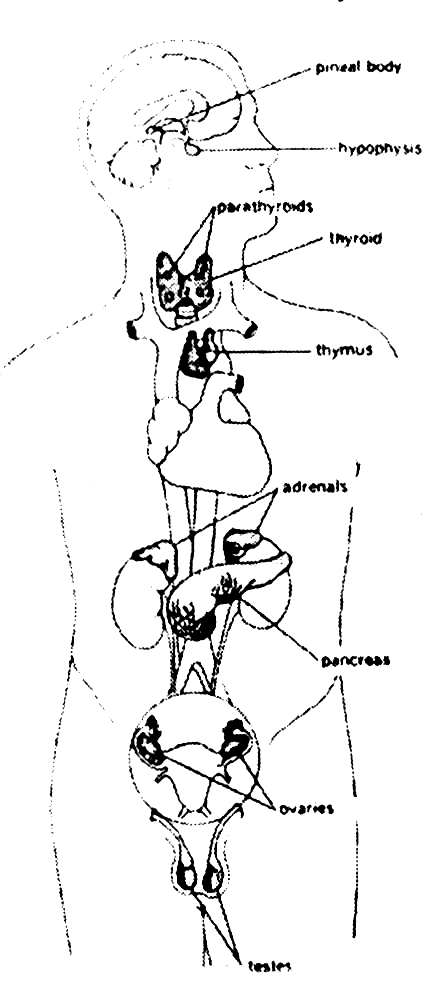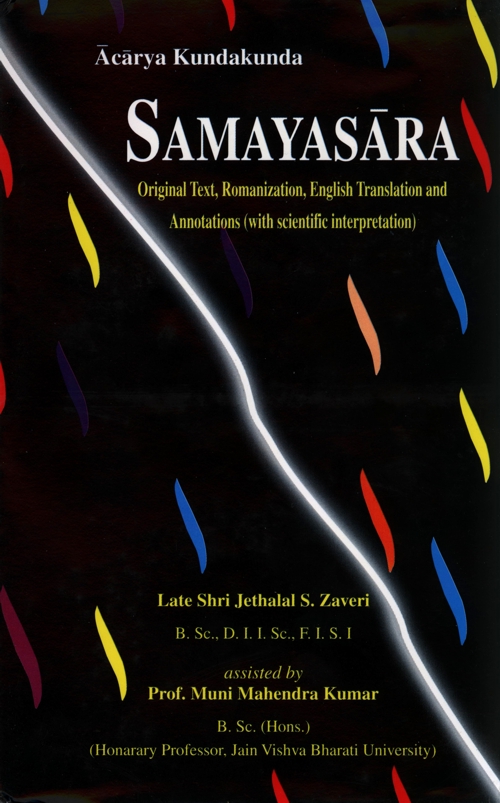
ajjhavusideṇa baṃdho satte mārehi mā va mārehi.
eso baṃdhasamāso jῑvāṇaṃ ṇicchayaṇayassa..26

evamaliye adatte abaṃbhacere pariggahe ceva.
kῑradi ajjhavasāṇaṃ jaṃ teṇa du bajjhade pāvam..27

taha vi sacce datte bamhe apariggahattaṇe ceva.
kῑradi ajjhavasāṇaṃ jaṃ teṇa du bajjhade puṇṇaṃ..28

vatthuṃ paḍucca taṃ puṇa ajjhavasāṇaṃ tu hodi jῑvāṇaṃ.
ṇa hi vatthudo du baṃdho ajjhavasāṇeṇa baṃdho tti..29
(Satte mārehi va mā mārehi) Whether one kills or saves other organisms, (baṃdho ajjhavasideṇa) the bondage results from feelings/impulses, (eso ṇicchayaṇayassa jῑvāṇaṃ baṃdhasamāso) this is the essence of the rule of bondage [of karma with souls].
(Evaṃ aliye adatte abaṃbhacere ceva pariggahe) [Similarly, as with killing so with] falsehood, stealing, sexual activities and possessiveness; (jaṃ ajjhavasāṇaṃ kῑradi) the instincts [underlying all these acts] (teṇa du pāvaṃ bajjhade) are the causes of the bondage of inauspicious karma [pāpa].
(Taha vi ya) In the same way, (sacce datte bamhe ceva apariggahaṭaṇe jaṃ ajjhavasāṇaṃ kῑradi) the instincts underlying [the activities of] truth, non-stealing, celibacy and renunciation of possessions (teṇa du puṇṇaṃ bajjhade) are the causes of the bondage of auspicious karma [puṇya].
(Puṇa vatthuṃ paḍucca jῑvāṇaṃ tu taṃ ajjhavasāṇaṃ hodi) Feelings are generaterd in the souls due to their attachment/affection for alien objects; (du vatthudo ṇa hi baṃdho) in reality, the bondage is not determined by objects (ajjhavesāṇeṇa baṃdho) (tti) [but] by feelings and instincts.
Annotations:
In these verses, the author concludes the discussion on the ultimate cause of bondage of karma contained in the preceding verses. To grasp properly the true significance of these verses, we must first clarify and understand the complex relation between feelings, attitude and behavior. We shall do so with a little help from some established findings of modern science and a simplified diagram. [See figure on p. 17]
In a living organism, the soul can be conceived as the nucleus circumscribed by the limits of the gross physical body. The main constituents of the organism are: gross body, sense-organs and brain, subtle micro-body (karma-śarῑra), psyche [citta] and the soul. In a simplified diagram the soul may be shown in the center, enveloped by the micro-body, forming the nucleus. This is surrounded by a contaminating field produced by the rise [fruition] of karma. It is obvious that the psychic expression, radiating towards the gross body, has to pass through this contamination envelop of Kaṣāya. The interaction of the psychic expression with kaṣāya results in the formation of the field of primal instincts called Adhyavasāya, which proceed towards the gross body in the form of urges and impulses[1] which is shown in the diagram as the field of psychic dispositions—Bhāva. The compulsive forces produced in the subtle body, cross the border and enter the gross physical body.
In the physical body, the waves of urges activate the endocrine-adrenals and gonads and compel them to produce specific chemical messengers in the form of hormones. Modern science has established that hormones have profound influence upon the mental states and tendencies, behavioral patterns of an individual.

They not only generate feelings but also command appropriate
action to satisfy
the need of the moment. Urges are now transmuted into emotions. The release and distribution of various hormones take place in accordance with the intensity of the urge which itself is proportional to the intensity of the passions contained in the adhyavasāya. The chemical messengers use blood circulation as their transport and interact with the brain and other parts of the nervous system. Together they constitute an integral coordinating system called Neuro-endocrine System. It controls and regulates not only every bodi
ly function but also profoundly influence mental states, thought, speech and behavioral patterns of an individual. Thus, the endocrine act as transformers between subtle adhyavasāya and gross physical body. Thus, this inter-cornmunication mechanism within the gross body, translates the intangible and imperceptible code of adhyavasāya into a form, crude enough to function through nerves and muscles. Thought, speech and muscular action together constitute the domain of threefold yoga.

In modern English language the words emotion, feeling, desire etc. refer to subjective states of mind with slight differnce in meaning, depending on the context. The word emotion, for instance, is the most general and is used to mean all mental states from the slightest change in mood to the most intense or violent seizures. 'Feeling' is more informal and refers to both weak and intense states. Desire refers to feeling of wanting or needing; on the other hand, the words urge, drive, impulse, and instinct refer to impulsive forces which produce the above mental status, and are, therefore, fore-runners of emotions.
 Jethalal S. Zaveri
Jethalal S. Zaveri
 Prof. Muni Mahendra Kumar
Prof. Muni Mahendra Kumar

